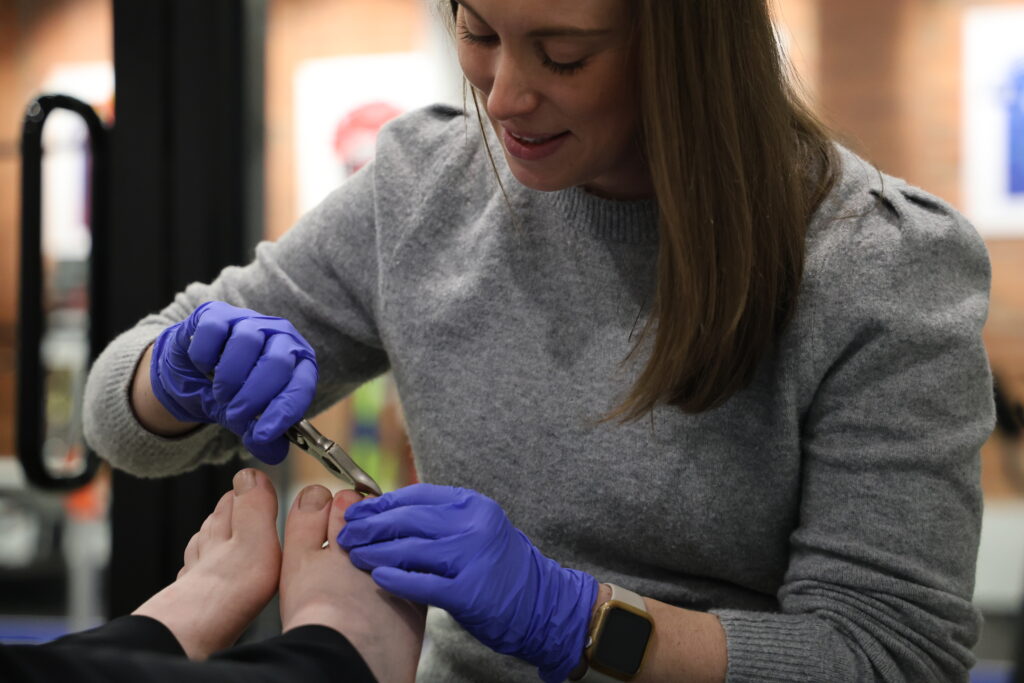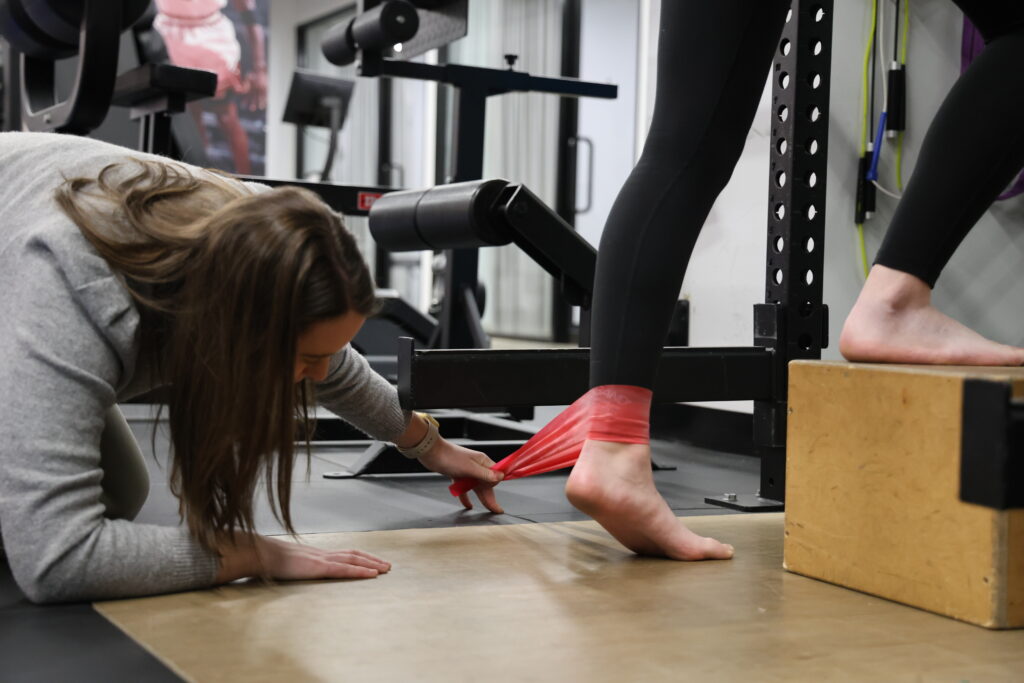Strong, pain-free feet are fundamental to how we move — whether you’re chasing performance goals or simply looking to stay active and comfortable day to day. At Melbourne CBD Physiotherapy and Sports Medicine Clinic, our podiatry service sits within a multidisciplinary setting — providing expert foot and ankle care backed by clinical precision and high-performance insight.
As a leading Melbourne CBD podiatrist, we manage everything from ingrown toenails, calluses, corns, and plantar warts to more complex issues involving foot structure, gait mechanics, and load tolerance. From stress fractures to orthotic prescription and modification, care is tailored to support recovery, resilience, and performance.
If you’re searching for a podiatry-led foot care service in Melbourne CBD, or dealing with persistent pain or mobility issues, our team is here to help you move better — from the ground up.
Frequently Asked Questions
At Melbourne CBD Physiotherapy and Sports Medicine Clinic, our podiatry service is built around precise diagnosis, targeted treatment, and long-term results. As a trusted Melbourne CBD podiatrist, we treat a wide range of foot and ankle conditions — from common skin and nail concerns such as ingrown toenails, corns, calluses, blisters, and plantar warts, through to fractures, load-related injuries, and biomechanical dysfunction.
While alleviating symptoms is important, our podiatrists focus on identifying and addressing the underlying cause — whether that’s poor load distribution, gait inefficiencies, or structural imbalance — to reduce recurrence and restore long-term function. Every treatment plan is carefully tailored, ensuring the right mix of hands-on care, education, and when needed, orthotic prescription or footwear advice.
As a comprehensive foot clinic in Melbourne CBD, we use gait assessments and movement analysis to identify performance deficits that impact everyday function and high-level athletic performance alike. Whether you’re recovering from injury, managing discomfort, or simply looking to move better, our podiatry team supports your goals with clear clinical reasoning and integrated care. We also offer pre-pointe assessments for dancers, ensuring readiness based on strength, control, and mobility benchmarks.

Ingrown toenail treatment: Gently and effectively removes the offending nail edge and addresses underlying causes to prevent recurrence.
Callus and corn management: Uses precise debridement techniques to relieve pressure and reduce discomfort caused by hardened skin and corns.
Blister prevention and care: Treats active blisters and advises on footwear, load management, and taping strategies to prevent future irritation.
Plantar wart treatment: Provides tailored treatment options such as debridement, topical therapy, and education on virus management.
Gait assessment and analysis: Evaluates walking and running mechanics to identify asymmetries, overload patterns, or inefficiencies.
Foot and ankle fracture identification and management: Assesses for signs of bony injury such as navicular fractures, facilitates imaging if required, and provides acute management or referral.
Orthotic prescription, fitting, and modification: Designs or modifies orthotic devices to offload painful areas, improve alignment, and support efficient movement.
Pre-pointe assessments to ensure dancers are physically prepared and safe to begin pointe work: Assesses foot, ankle, and lower limb strength, mobility, and control to ensure dancers are safe to begin pointe work.

Frequently Asked Questions
You can privately consult with a registered podiatrist without a referral from a medical doctor. However, if you see a General Practitioner (GP) and it is determined that podiatry should form part of your care plan, the GP may refer you under a Chronic Disease Management (CDM) plan. This qualifies you for a Medicare rebate, which partly reimburses the cost of your consultation.
Depending on your level of private health coverage, you may also be eligible for a rebate through your private health insurer. Please note that Medicare and private health rebates cannot be claimed simultaneously for the same service.
Our team look forward to working with you to help achieve your goals
At your initial podiatry consultation, your clinician will begin by taking a thorough medical history and discussing your current concerns, symptoms, and goals. This is followed by a physical assessment, which may include examining your skin, nails, foot structure, joint mobility, and walking or running patterns (gait analysis).
Depending on your presentation, the podiatrist may also assess footwear, perform pressure/load assessments, and, where necessary, recommend imaging or orthotic intervention.
You’ll receive a clear explanation of your diagnosis and a tailored management plan. This may involve hands-on treatment, education, exercise-based rehabilitation, footwear advice, or follow-up care to address both symptoms and their underlying cause.
No, you do not need a referral from your GP to see a podiatrist — you can book directly with our team. However, if your GP identifies that podiatry should be part of your ongoing care, they may refer you under a Chronic Disease Management (CDM) plan. This referral enables access to a Medicare rebate for eligible services.
Patients who may qualify for a CDM plan often have chronic or ongoing medical conditions that impact their foot health — such as diabetes, arthritis, circulatory issues, or chronic foot pain. In these cases, podiatry input can play a vital role in managing symptoms, preventing complications, and supporting mobility and independence.
If you’re unsure whether you’re eligible, our administration team can assist you or direct you to speak with your GP for further guidance.
At your initial podiatry consultation, your clinician will begin by taking a thorough medical history and discussing your current concerns, symptoms, and goals. This is followed by a physical assessment, which may include examining your skin, nails, foot structure, joint mobility, and walking or running patterns (gait analysis).
Depending on your presentation, the podiatrist may also assess footwear, perform pressure/load assessments, and, where necessary, recommend imaging or orthotic intervention.
You’ll receive a clear explanation of your diagnosis and a tailored management plan. This may involve hands-on treatment, education, exercise-based rehabilitation, footwear advice, or follow-up care to address both symptoms and their underlying cause.
People of all ages and activity levels consult with podiatrists for a wide range of foot and ankle concerns. This includes individuals with skin and nail conditions (such as ingrown toenails, calluses, corns, or plantar warts), musculoskeletal pain, overuse injuries, or changes in foot structure.
Podiatrists also commonly treat people experiencing heel pain, foot or ankle injuries, gait issues, and those requiring orthotics or footwear advice. Individuals with chronic health conditions such as diabetes or arthritis may see a podiatrist for long-term management and prevention of complications.
Whether you’re dealing with persistent foot pain, recovering from injury, or simply want to improve the way you move, a podiatrist can provide tailored care to support your mobility and long-term function.















